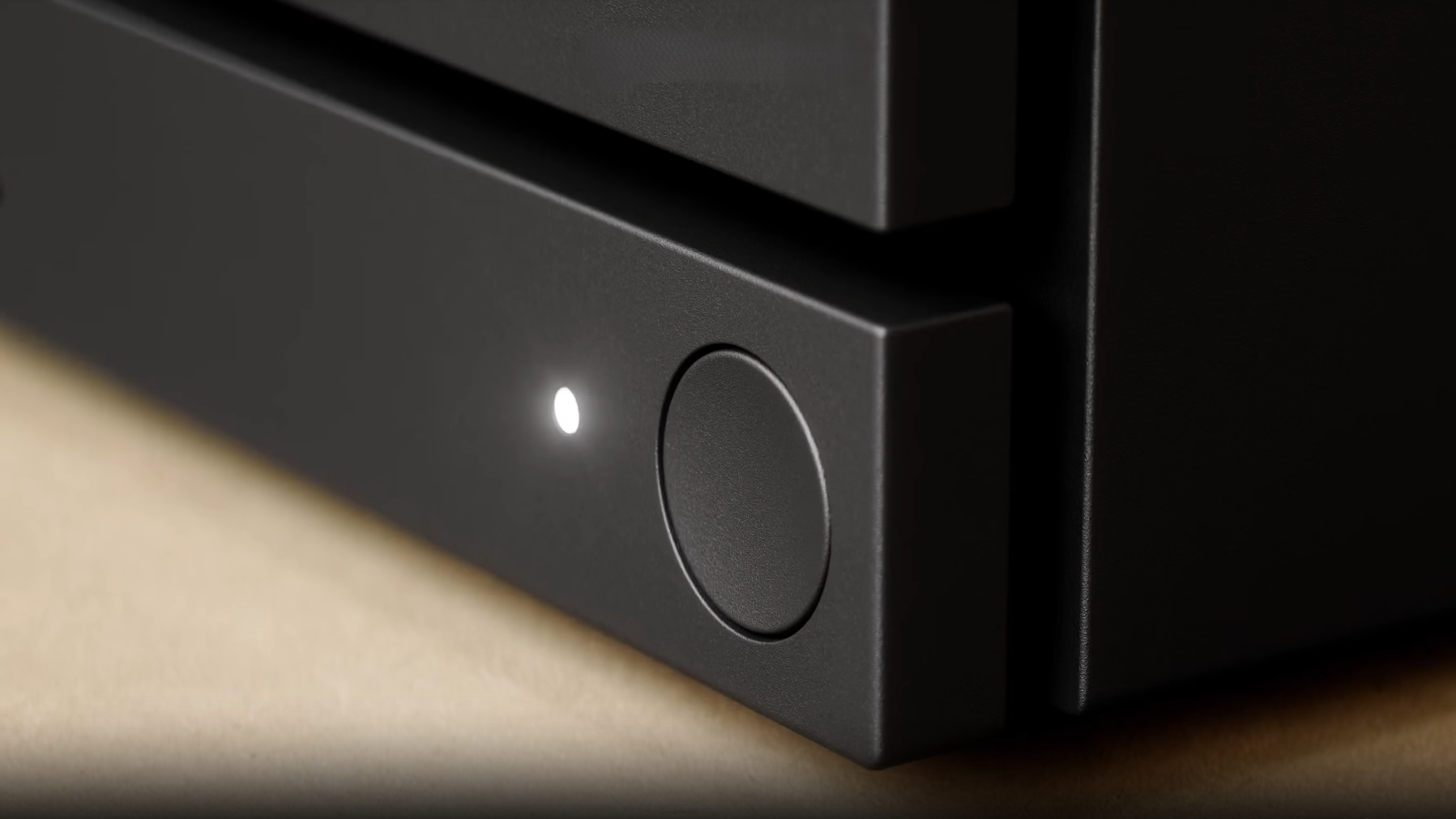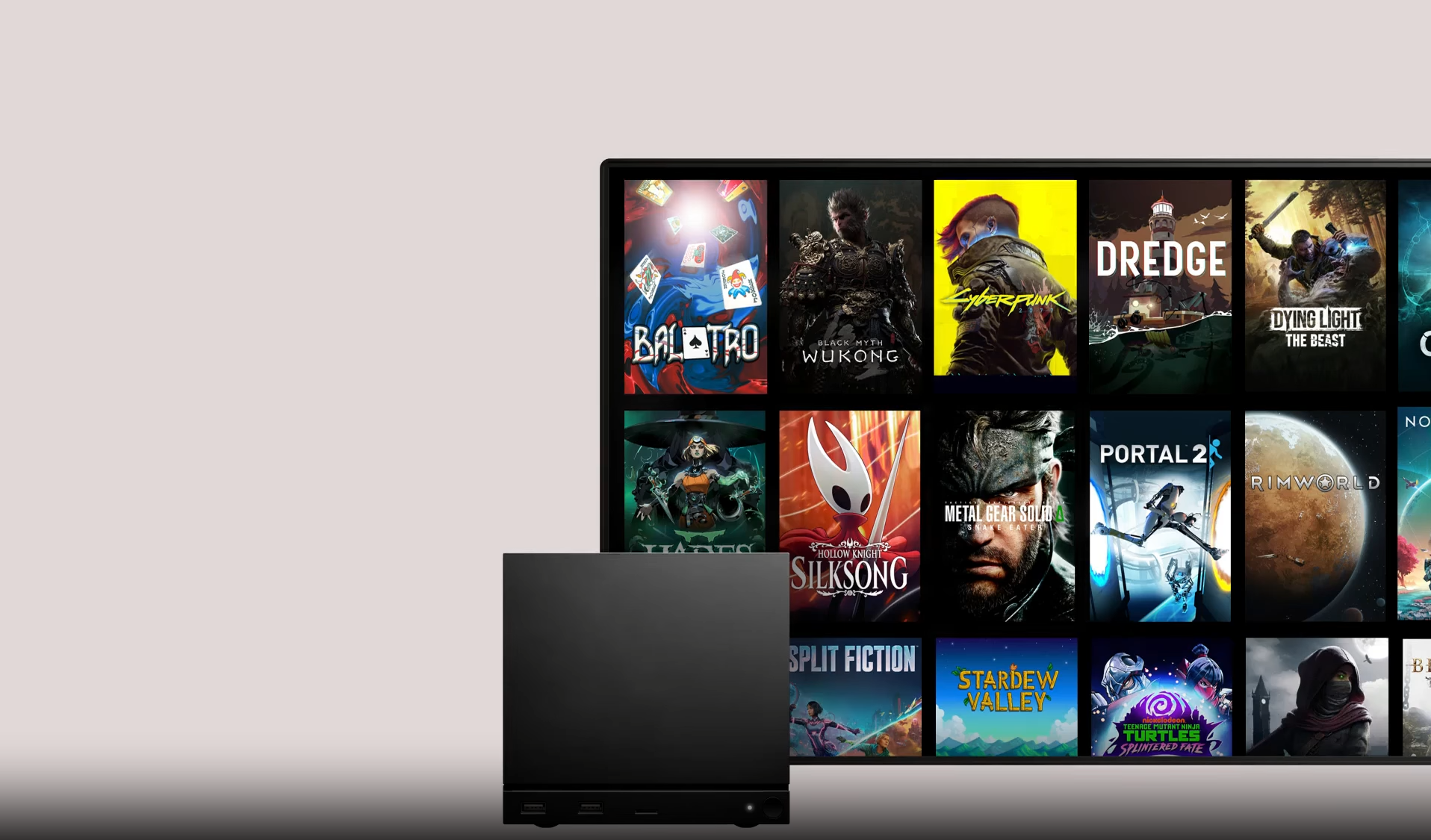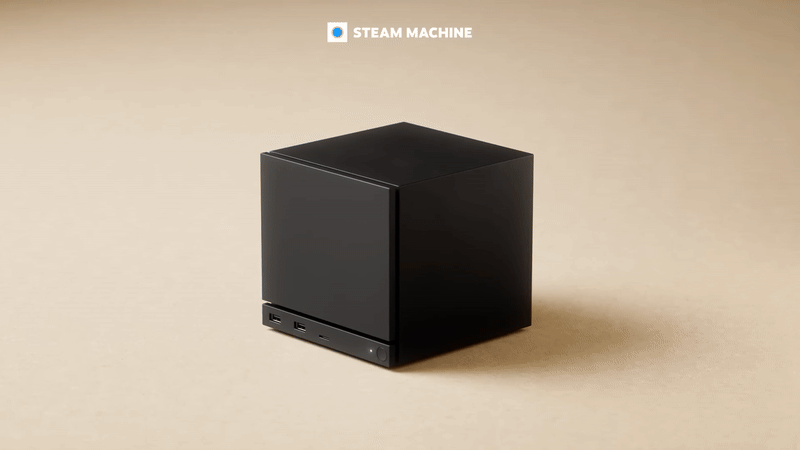- Valve’s new gaming steam machine is expected to launch in spring 2026, but pricing has yet to be announced
- Specs highlight major differences between new system and Steam Deck
- The Steam Machine’s processor and specs suggest it could challenge current-gen consoles
It’s literally been years since rumors began about Valve’s plans for new hardware following the Steam Deck’s launch in 2022, with rumors growing about a system that acts as a hybrid gaming PC and console setup. And now we finally have our answer: the new Steam Machine scheduled to launch in Spring 2026. However, one of the biggest questions is how does this compare to the Steam Deck?
According to the spec sheet, the Steam Machine (not to be confused with the discontinued series that debuted in 2014) is “more than six times more powerful than the Steam Deck,” thanks to a new CPU and GPU capable of performance that should exceed anything the handheld can offer.
Crucially, the Steam Machine isn’t a handheld, so while a comparison between the two systems might not seem natural, it’s the first system to follow the Steam Deck OLED when running SteamOS, and one that could potentially indicate what’s in store for a portable successor in the future.
It should be noted that the specifications could very well change before its eventual launch. But for now, let’s discuss the main differences between the Steam Deck and the new Steam Machine…
1. Steam Machine has a significantly more powerful CPU and GPU
The Steam Deck LCD and Steam Deck OLED have never been considered powerful portable gaming devices, but have managed to stay in the rankings among the best portable consoles – where some might even say they are the best, thanks to their affordability and ease of use.
Valve isn’t kidding when it says the Steam Machine is more than six times more powerful than the Steam Deck; the LCD and OLED models use a 4-core Zen 2 CPU and an RDNA 2 GPU with only eight compute units (the CPU and GPU are combined on the APU).
With the Steam Machine, Valve is aiming for a lot more power, using a 6-core AMD Zen 4 CPU and a “semi-custom” AMD RDNA 3 GPU, with 28 compute units. Not only is there a major step forward in architecture from Zen 2 to Zen 4, resulting in faster clock speeds, but the Steam Machine has an additional 20 compute units, closer to what can be found in the PS5 (36 compute units) or even a low-end Nvidia RTX GPU.
While these specs aren’t the be-all and end-all, they’re enough to put the Steam Machine and Steam Deck apart in terms of power and performance, as you’d expect for a PC designed for desktop and couch setups.
2. Steam Machine supports ray tracing and 4K gaming at 60fps

While the Steam Deck can play some games with ray tracing settings enabled (or at 4K resolution while maintaining decent frame rates), there aren’t many games where this would be possible without encountering single-digit frame rates or having to use aggressive scaling.
The Steam Machine looks set to change that, with its spec sheet explicitly mentioning ray tracing support and 4K gaming at 60fps using AMD’s FSR upscaling method.
For now, this should be FSR 3, as AMD has yet to backport FSR 4 to RDNA 3 hardware, but that could change by the time the Steam Machine launches (especially since FSR 4’s source code was accidentally leaked).
With ray tracing and 4K gaming at the forefront, this once again puts it well out of reach of the Steam Deck.
3. Steam Machine has more RAM for system and games

While the Steam Deck has 16GB of LPDDR5 RAM, the maximum that can be used for gaming (or more precisely, the GPU) is 4GB.
With the Steam Machine, the specs indicate that 16GB of DDR5 RAM will be available as general system RAM, while 8GB of GDDR6 appears set as RAM allocated to games.
This should generally improve performance with the upgraded CPU and GPU, and give it more headroom for sustained frame rates by reducing stuttering issues – and that’s what helps the Steam Deck when increased to 4GB from its default of 1GB.
4. Steam Machine connectivity highlights a hybrid nature of PC and home console

If that wasn’t already clear enough, the Steam Machine is a departure from the portable nature of the Steam Deck, where a gaming setup on a couch or desktop is the way to go. The Steam Deck could be connected and used on a gaming monitor or TV, but this had the disadvantage of losing performance at resolutions above 800p.
With the Steam Machine, Valve has clearly designed it as a designated home console that can be used on a gaming monitor or TV, with two display output ports via DisplayPort 1.4 and HDMI 2.0, and others such as 4 USB-A ports and 1 USB-C 3.2 Gen 2 port.
There’s no sign of HDMI 2.1, but HDMI 2.0 (with chroma subsampling) still allows for 4K 120Hz gaming. DisplayPort 1.4 also supports 4K 240Hz, a huge boost for all gamers using monitor setups.
There’s still plenty more information to come, as there’s no word yet on pricing, and the question remains whether Valve’s new gaming system will replicate the Steam Deck’s affordable pricing model.
Follow TechRadar on Google News And add us as your favorite source to get our news, reviews and expert opinions in your feeds. Make sure to click the Follow button!
And of course you can too follow TechRadar on TikTok for news, reviews, unboxings in video form and receive regular updates from us on WhatsApp Also.

The best game consoles




